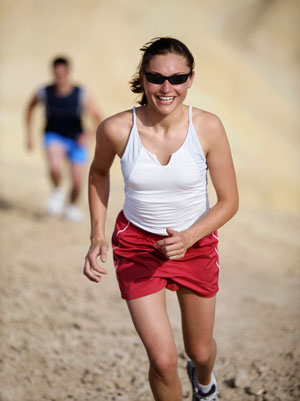
And what's not to love? You get the satisfaction of completing an impressive distance – 13.1 miles – without the time-suck of training for a full. But when you're gearing up for your first, the jump to a race with the word "marathon" in the title can be intimidating.
Never fear: Joe English, a coach in Portland, Oregon (running-advice.com), has some tips to carry you through every phase of the 10-week training process, from the first steps of your first run to your first steps across the finish line.
During weeks one through three…
Coach's Tip: Even if you feel great, stick to your plan and resist the urge to do too much too soon. "Overdoing it can lead to fatigue or even injury," says English.
Exercises to Help You Avoid Injury
During week five…
Coach's Tip: "As you adapt to the training it will begin to feel easier – but it's also possible to lose focus when there's a long way to go before the race," says English. Stay on task by focusing on mini-goals within each workout, like hydrating regularly or finishing faster.
During weeks nine and 10…
Coach's Tip: "Take the edge off your taper by spending 30 minutes a day doing something that relaxes both your mind and body, like a walk or a yoga class," says English. Try to sleep an extra 30 minutes each night.
The day before the race…
Coach's Tip: It's normal to experience a big-time case of nerves the day before a race. Distract yourself by playing with the kids or watching a movie, and try focusing on how well you've prepared rather than what could go wrong.
On race morning…
Coach's Tip: "Arrive early to the race, as everything from parking at the start to waiting in the portables line can take longer than you expect," says English.
Don't Make These Race-Day Mistakes!
During the race…Coach's Tip: In the first half of the race, go slower than feels necessary. Pick up your pace at the halfway point. The energy you saved in the beginning will help you finish strong.
More from Runner's World
Why Races Cost So Much
7 Races Every Runner Should Do
Find the Perfect Race Destination




































